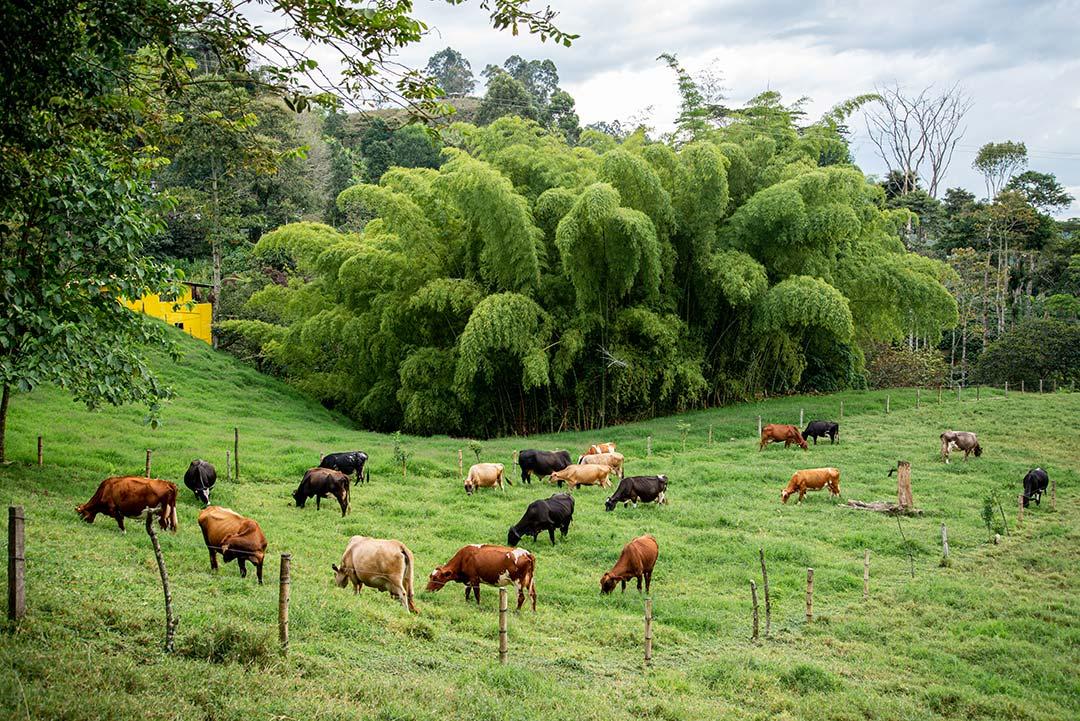For the financial sector, tropical commodities are often attractive because of their importance to so many sectors of the economy providing a multitude of opportunities to capture returns. Consumers rely on their production for food, fuel, and materials. For farmers, large and small, they represent a vital source of income. And, for governments, they can not only sustain domestic populations but offer lucrative export opportunities. All of these sectors’ reliance on tropical commodities creates a lucrative market for banks to invest in. However, tropical commodity value chains are threatened by climate change and our response to it, and this matters for financial institutions. A recent survey reinforces this rationale for better understanding these risks, and new opportunities, for tropical commodities.
Last week the UNEP Finance Initiative (UNEP-FI) released an extensive survey of Latin American financial institutions and how they manage climate transition risks. The results provide lessons for those concerned about climate change across economic sectors – more so than a blog can capture. However, a few findings struck me as particularly relevant for the financial sector.
Tropical Commodities Are Vulnerable
Whether we focus on the physical impacts of climate change or the disruption of a low-carbon transition, agriculture is front of mind in Latin America. (As an aside, I encourage readers to take a break between Zoom calls to watch an excellent Vox examination of coffee’s exposure to physical climate risks in Colombia).
“Sixty-nine percent of the participant banks identified forestry and agriculture as the sector most exposed to climate risks, followed by the energy generation sector at forty-four percent”. I can see why this is the case. It stems from a combination of the importance, economically, politically, and culturally, of farming in the region and the unique challenges that commodity production faces in both a changing climate and a low-carbon transition.
Climate Transitions Present Risks
Physical climate risks threaten to disrupt crop production, supply chains, and consumer markets in the coming decades. That is enough for financial institutions that support these sectors to worry about. However, the transitions underway to mitigate climate change also carry financial implications. Latin American banks are appropriately concerned, across different risk sub-categories: “78 [percent] of participants stated that reputation risk was the main risk incorporated in their evaluations, followed by market and political risk, mentioned by 66 [percent] and 58 [percent] of banks, respectively.” Existing work by Chain Reaction Research reveals the current risk levels institutions face in Latin American agriculture, and Orbitas believes these transition risks will accelerate in the coming years.
Institutions Lack Quantitative Means to Measure Risks
“Forty-one percent of the banks stated that they did not have any mechanisms to identify, analyze and manage climate risks.” When we first imagined Orbitas, this was the status quo we felt should be challenged. Also, a lack of mechanisms is not limited to Latin America but is true across almost all regions and economic sectors.
The survey reveals that banks typically use qualitative measures rather than quantitative analysis to estimate their level of risk. As UNEP-FI rightly points out, quantifying risks is necessary to improve climate risk management, and the authors specifically note that forward projections and scenario analysis are tools that offer quantitative insights.
Orbitas’ work is to fill in this information gap. We are currently developing a scenario analysis across tropical commodities, paired with specific microeconomic analysis for individual countries and commodities. We can then show how these scenarios inform financial analysis to estimate the impact on a company’s financial performance. Whilst every financial institution will have its own risk management framework, we will demonstrate that a more quantitative approach can be implemented.
The Risks Are Vast, and Hard to Capture Comprehensively
Climate risks – both physical and transition – are myriad. From my discussions with financial institutions, it is already clear that many lack a clear comprehension of how these risks manifest in practice, including illuminating examples. UNEP-FI recommends a risk taxonomy that “will allow classifying and describing the nature of each type of climate risk.” We should pursue this as the goal across all sectors, and Orbitas is currently developing such a taxonomy specifically for tropical commodities. No two sectors are alike, and we have already found a vast array of potential risks that financial institutions and companies must navigate. There are already a lot of reporting standards banks must follow, so it is important that a taxonomy not reinvent the wheel and be consistent with existing categories developed under the Task Force on Climate-Related Financial Disclosures. Unfortunately, “only 12 [percent] of those surveyed claim to have advanced knowledge about TCFD”.
Banks are the primary channel through which tropical commodities in Latin America get their financing. To lend sensibly in the age of climate change banks have to re-tool risk management to account for what lies ahead. UNEP-FI’s examination shows that financial institutions know this is a path they need to tread, but they are still at the beginning of the journey. I am more confident that Orbitas can assist banks to improve their appreciation of climate risks for tropical commodities.
